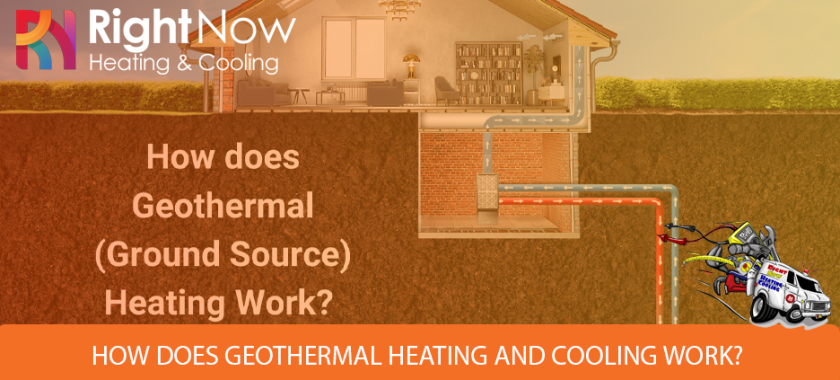How Does Geothermal Heating and Cooling Work?
Professional Heating and Cooling Installation technicians say, a geothermal system works by pumping heat from the ground to a coil inside your home. The refrigerant is vaporized as it passes over the coil and travels outside to a geothermal loop. The heat from the water is deposited in the ground, where it is more stable year-round. Unlike conventional air-conditioning systems, which use an external compressor to cool the air, geothermal units do not produce or consume heat.

While geothermal systems are complex, they are largely the same. They are composed of a heat pump, a distribution system, and two main components. In a forced air system, the water is drawn from a hot spring, underground aquifer, or other suitable source and circulates through a mesh of pipes. The fluid flows through the equipment to transfer heat from the ground to the building in a water-to–water system. Then, the water is pumped through the piping system into the building.
Another type of geothermal system is drilling a hole in the ground. This is known as an open-loop system. An open-ended pipe heats the home by drawing water from an underground well or hot spring. The water then travels through the heat pump to transfer heat to the building. A closed loop system is easy to install and requires minimal maintenance.
A geothermal system can be configured as a water-to-water or a forced-air system. In a water-to-water system, piping runs through the walls and baseboard units to move the heated fluid. The fluid returns to the ground, where it exchanges heat with the home’s air. The heat is then carried through the ductwork or pipes, and the heat is then transferred to the home.
A geothermal system uses water from an underground aquifer or a hot spring. The water is pumped through the heat pump, which then cools and warms the water. The water is then passed through a heat exchanger which then releases the used water into ground. Open-loop systems are simple, but they have their drawbacks. An open-loop system offers many benefits.
An open-loop system is the most common type of geothermal systems. An open-loop system uses an open-ended pipe to draw water from a hot spring or aquifer beneath the surface. The heat exchangers in the heat pump then heat the water and discharge it back into the same water source. Open-loop systems have few drawbacks.
A geothermal system uses water to transfer heat to and from the ground. Water-to-water systems can be either forced-air, or water-only. The first uses air to pump through the air handler. Water-to-water systems are more efficient because they use fluid to transfer heat from earth. A geothermal system can save up to 50 percent on energy costs and reduce energy bills.
The most basic form of geothermal heating and cooling systems uses a heat pump and a distribution system to transfer heat from the ground to the home. The water is cooled through a heat exchanger, and the used water is discharged back into the same water source. The most common types of geothermal heating and cooling systems use a combination of these technologies. Open-loop systems are the most popular type.
Geothermal heating and cooling systems use water from underground water sources. Heat pumps transport heat from the ground to your home using the water. The heat pumps not only transfer heat but also reduce air pollution, global warming, acid rain, and other harmful effects. Geothermal heating and cooling systems reduce carbon emissions and save money on utility bills. If you’re considering installing one, contact a professional to discuss your options.
A geothermal heating and cooling system uses a ground-loop system, which works differently than traditional furnaces. A geothermal heat pump exchanges heat with the ground, water source, and air. The ground temperature is maintained at 50-60 degrees Fahrenheit all year. The fluid in the loop absorbs heat and turns it into heat pumps. If you have any more questions regarding Heating and Cooling Installation, please call us asap.
Looking for heating and cooling installation services in Beaverton Oregon, click this link?


Leave a Reply
You must be <a href="https://rightnowheatingandcooling.org/wp-login.php?redirect_to=https%3A%2F%2Frightnowheatingandcooling.org%2Fheating-and-cooling-installation%2Fhow-does-geothermal-heating-and-cooling-work%2F">logged in</a> to post a comment.